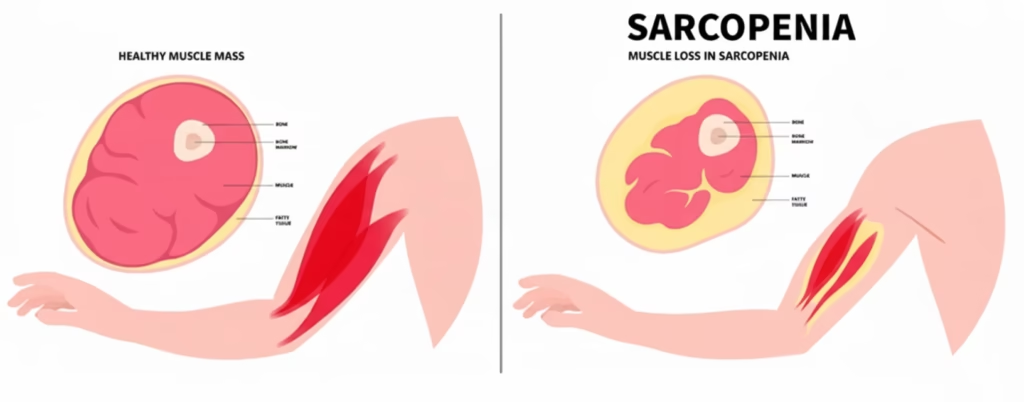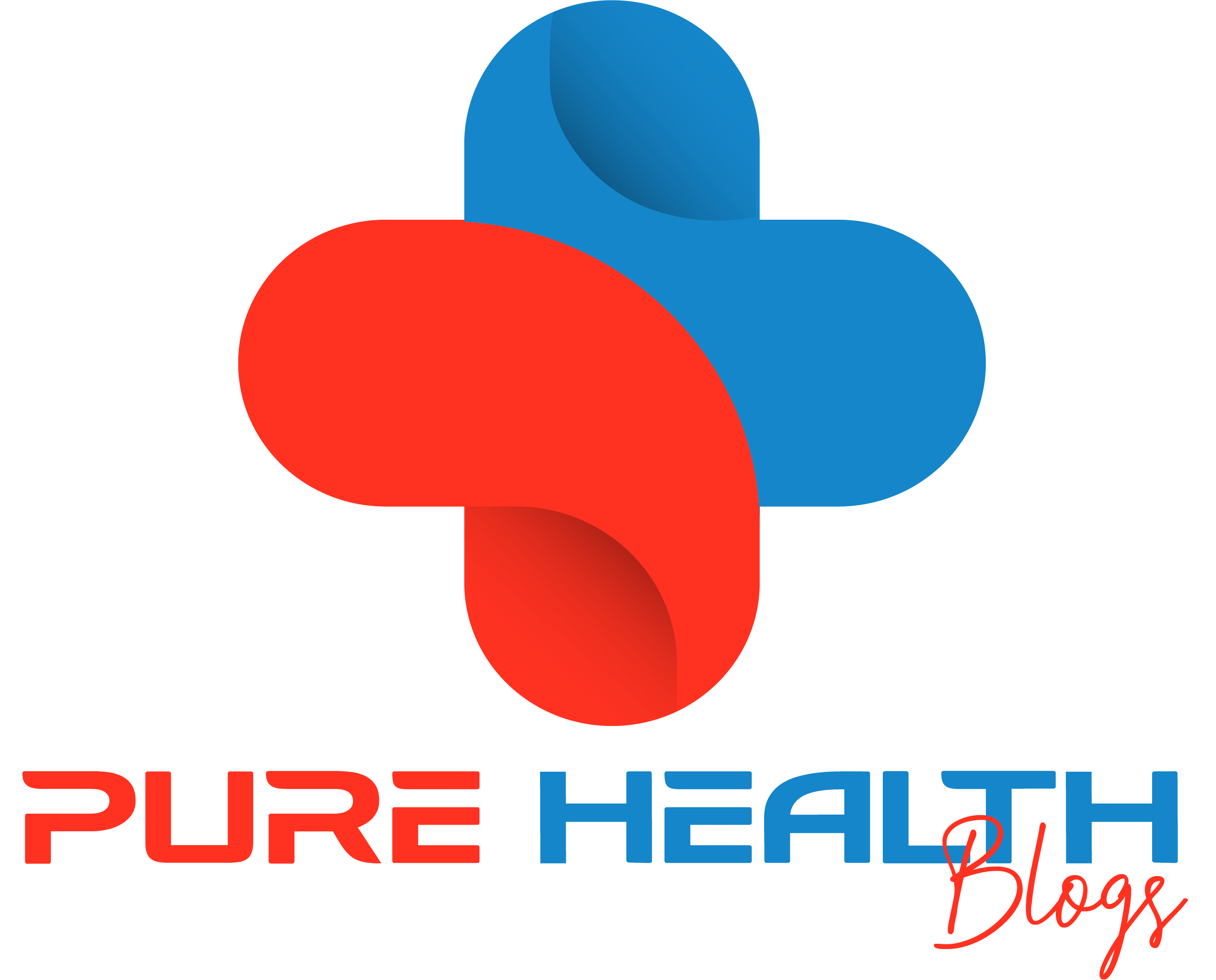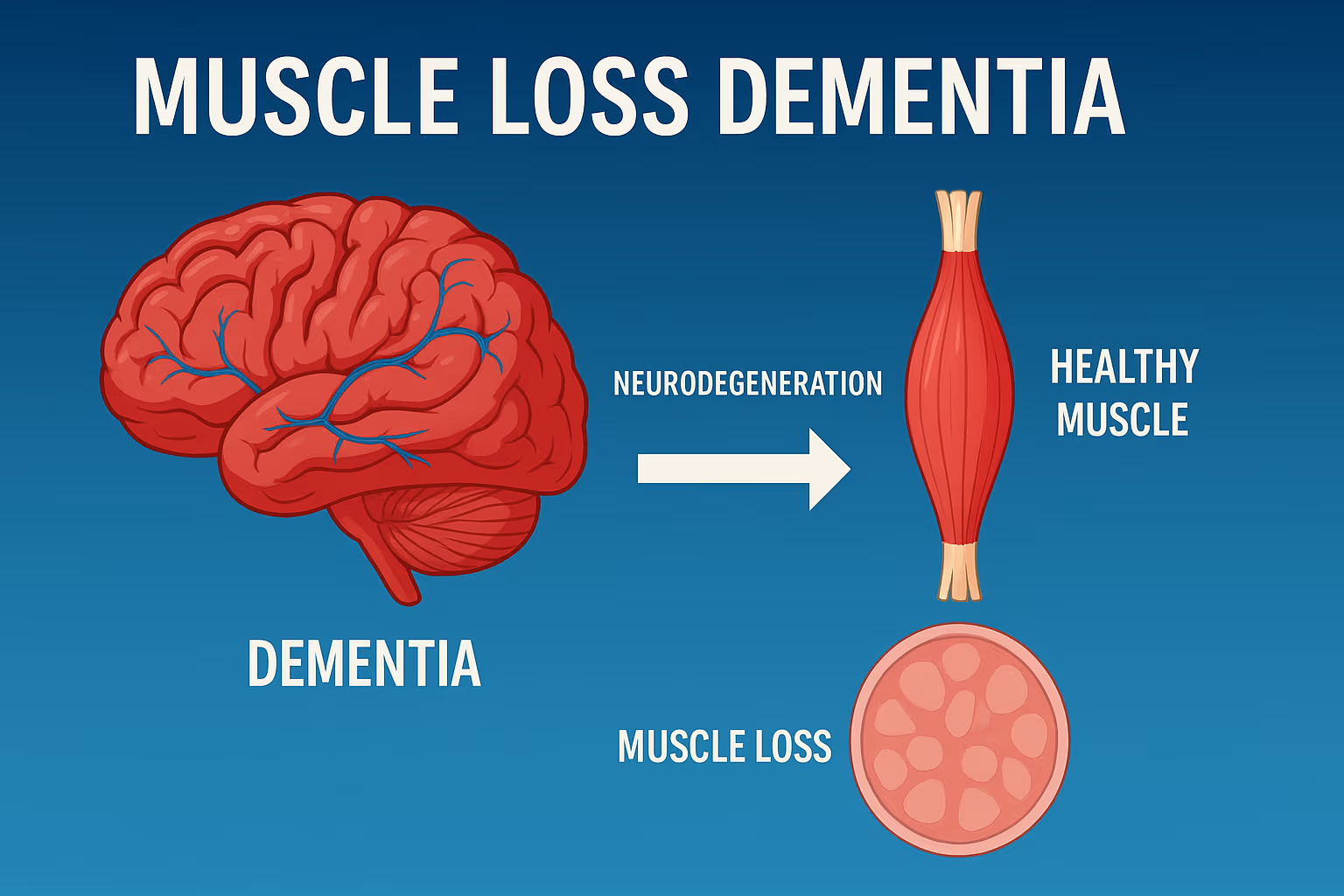What if it is possible that protection of your muscles can also protect your mind? Of the many things that come with getting older, the most common and most feared are age-related muscle loss dementia. While most people think of these as two separate diseases, there is a growing body of research finding an interesting and powerful connection between the two. This connection, which is sometimes called muscle loss dementia, is changing the way scientists, doctors, and average people think about successful aging.
In this in-depth, evidence-backed guide, you’ll discover why muscle loss dementia and other dementia are closely linked, the science behind their connection, who’s at risk, and most importantly—what you can do right now to help protect both your muscles and your memory. Whether you’re caring for an aging loved one or looking to safeguard your own future, this guide will empower you with actionable insights and practical tips.
What is Muscle Loss Dementia? And Its Importance
Muscle loss dementia is not a formal medical diagnosis, but a catchy label that has been coined to define the solid relationship that exists between age-related muscle loss (sarcopenia) and the risk of dementia. Sarcopenia is the loss of muscle mass, muscle strength and muscle function which is progressive and can start as early as your 30s and speed up in your later decades. Why is this connection so vitally important? According to the best research, older people with a large loss of muscle are almost 60% more likely to develop Alzheimer’s disease or other Stages of dementia. This means that it is not only important that you keep your muscles moving and independent, but also your brain.
Related Concepts and Synonyms
- Sarcopenia and frailty
- Memory loss and cognitive decline
- Neurodegenerative diseases (Alzheimer’s, Parkinson’s)
- Aging muscle health
- Physical and psychological health.
Understanding Sarcopenia: The Silent Muscle Thief

Sarcopenia has been called the “silent thief” since often it goes undetected until a person gets weak or disabled. Here’s what you need to know:
- Definition: Age-related loss of muscle mass, strength and function.
- How common is it? As many as 50% of over 80-year-olds-they have some degree of sarcopenia.
- Why does it happen? Decreasing hormones, inactivity, inflammation, bad diet and chronic diseases all contribute to it.
Key Symptoms of Sarcopenia
- Weak grip strength
- Difficulty getting out of a chair or climbing stairs
- Slower walking speed
- Increased falls or issues with balance
- Loss of stamina or endurance
The Cost of Ignoring Sarcopenia
Muscle loss isn’t just about looking frail—it can:
- Muscle loss isn’t just about looking frail
- Reduce independence and mobility
- Increase in the risk of falls, fractures and hospitalization
- Increase the risk of both chronic diseases and premature death.
- Risk of cognitive decline & dementia increases the risk of cognitive decline.
What is Dementia? From Memory Loss to Daily Challenges
Dementia is a general term to refer to a group of symptoms of memory, thinking and social skills that are severe enough to interfere with daily life. The most common is Alzheimer’s disease however, there are many others such as vascular dementia, Lewy body dementia, and front-temporal dementia.
Main Symptoms of Dementia
- Memory loss interfering with the daily life
- Confusion regarding time or place
- Difficulty in planning or solving problems
- Problems with familiar activities
- Mental – poor judgment or decision-making.
- Personality or mood changes
Dementia is Not a Normal Part of Aging
It should be noted that while some memory loss is normal as part of the aging process, dementia is not a normal part of the aging process – at least not for most people who maintain their cognitive functions into their 80s and 90s.
How Are Muscle Loss and Dementia Connected?
The Overlapping Epidemics
Muscle loss and dementia are commonly found in the ageing population, and with good reason. Research for the past decade seeks a strong, two-way relationship:
- People with sarcopenia tend to develop dementia.
- People with dementia tend to have more severe muscle loss.
How Common Is the Overlap?
A 2023 review in Age and Ageing found that up to 1 in 3 older adults with dementia also had sarcopenia. In long-term care facilities, the rates are even higher.
Why Does this Overlap Happen?
- Both conditions have the same risk factors (aging, inactivity and poor nutrition).
- Both are associated with inflammation and hormonal changes.
- Impaired function of the brain may lead to less physical activity and accelerate muscle loss
- Weak muscles can limit mobility, which in turn limits brain stimulating activities
Key Research: The Science Behind Muscle Loss Dementia
1. Muscle Strength Predicts Brain Health
A landmark 2009 study in Archives of Neurology followed over 900 older adults. Those having least muscle strength were:
- 2x as likely to get Alzheimer’s
- More likely to have more rapid decline in memory
2. Meta-Analysis: Sarcopenia Increases Dementia Risk
A 2023 meta-analysis in Age and Ageing found:
- People with sarcopenia had 59% higher risk of developing any form of dementia.
- The risk was independent of other factors such as age, sex and cardiovascular health.
3. Grip Strength and Cognitive Function
Handgrip strength is a great and simple way to determine the overall health of your muscles. Multiple studies demonstrate that the lower the strength of the grip, the higher the risk for decreased executive function and an increased risk for dementia – even among people with no apparent physical disabilities.
4. Exercise Interventions Reduce Risk
A 2022 review in The Lancet Healthy Longevity concluded that resistance training and physical activity can reduce dementia risk by up to 30%, especially when started before significant muscle loss occurs.
Risk Factors: Who Is Most at Risk?
Top Risk Factors for Muscle Loss Dementia
- Age 60+
- Physical inactivity or sedentary lifestyle
- Chronic health problems (diabetes, heart disease, obesity)
- Nutritional deficiencies (protein, vitamin D, B12)
- Hormonal changes (e.g., menopause, andropause)
- Social isolation and depression
- Family history of dementia or frailty
- History of frequent falls or fractures
Symptoms: Recognizing the Warning Signs
Early Symptoms of Muscle Loss Dementia
Physical Signs
- Visible loss of muscle mass (arms or legs getting thinner)
- Weak grip or handshake
- Walking slower or the inability to get out of a chair
- Difficulty carrying groceries or carrying objects
Cognitive Signs
- Increased forgetfulness
- Problems with concentration or finding words.
- Difficulty following a conversation or instructions
- Mood swings/withdrawal from activities
When to Seek Help
If you or a loved one start to see these changes, then discuss them with your doctor. Early intervention has a significant impact on the outcome.
Biological Pathways Linking Muscle Loss and Dementia
1. Chronic Inflammation
Inflammation harms the muscles and brain cells. Conditions like diabetes, obesity and even stress can fuel this process.
2. Blood Flow and Vascular Health
Good circulation is supported by healthy muscles. Poor circulation limits the brain supply of oxygen and nutrients leading to a higher risk of developing dementia.
3. Hormonal Decline
Hormones, such as testosterone, estrogen, and growth hormone, decline as we age and increase the risk of both sarcopenia and cognitive decline.
4. Insulin Resistance and Metabolic Syndrome
Metabolic problems damage the muscle and brain. Controlling blood sugar is essential to healthy aging.
5. Neural Degeneration
As dementia progresses, it can damage the nerves by controlling muscle movement, hastening muscle wasting and a decrease in mobility.
Prevention: How to Protect Muscle and Brain Health
Evidence-Based Prevention Strategies
1. Stay Physically Active
- Strength training – at least 2 times a week with weights, resistance or body weight exercises.
- Aerobic activity – opt for walking, cycling or swimming.
- Balance & flexibility – try yoga, tai chi or stretching.
2. Eat a Muscle- and Brain-Friendly Diet
- Protein: Aim for 1-1.2 g of protein per kg of body weight daily from sources such as chicken, fish, legumes, eggs and dairy products.
- Healthy fats: Fats such as omega-3s from fatty fish, nuts and seeds.
- Antioxidants Fill your plate with color: fruits and vegetables.
- Vitamins D and B12: These are important for nerve and muscle health, so make sure to get enough.
3. Challenge Your Brain
- Puzzles, reading and learning new skills
- Social engagement (clubs, doing service work, family time)
- Mantra Meditation, gratitude journaling and other mindfulness practices
4. Get Regular Health Checks
- Annual checkups with an emphasis on blood pressure, glucose and cholesterol, as well as vitamin levels.
- Screening tools include asking the patient about grip strength and gait speed.
5. Treat Chronic Conditions
- Manage diabetes, heart disease, and other illnesses with medical supervision
6. Prioritize Sleep
- Get 7-8 hours of good quality sleep every night.
- Poor sleep increases inflammation and makes it harder for muscles and brains to recover from.
7. Avoid Smoking and Excessive Alcohol
• Both speed up muscle loss and cognitive decline.
Actionable Tips: Building a Routine for Body and Mind
How to Incorporate Muscle Loss Dementia Prevention into Daily Life
Daily Checklist
Morning:
- Light yoga or stretches, five to 10 minutes
- Protein-packed breakfast: eggs, greek yogurt or nuts
Midday:
- Brisk walk, 20–30 minutes
- Lunch with vegetables – lean protein
- Mental Exercise: crossword, sudoku, read an article
Afternoon/Evening:
- Short burst resistance training routine: squats, push-ups, resistance band rows
- Call a friend or family member, even on the phone
- Balanced dinner (fish, whole grain etc. green leafy vegetables)
- Mindfulness exercise before bed.
Top Benefits of This Routine
- Stronger muscles and bones
- Sharper memory and thinking
- More energy and better mood
- Lower risk of falls, fractures and hospitalization
- Longer, healthier, independent life
Additional Resources & Internal Links
- Healthy Aging Strategies for Body and Brain
- Benefits of Resistance Training for Seniors
- Best Foods for Cognitive Health
- Preventing Falls in Older Adults
Conclusion:
One of the biggest discoveries in the field of healthy aging is associated with muscle loss dementia. Knowing this connection helps you protect your body and mind so that you can be independent as you age.
Key takeaways:
- Muscle and brain function go hand in hand.
- Preventing muscle loss begins early, with being active, eating right and being socially active.
- Every single day choice you make adds up to substantial long-term gains.
So don’t wait until symptoms develop. Start a workout routine now that will strengthen muscles and memory. For personalized advice, check out our other similar guides or contact a medical professional for personalized advice.
Frequently Asked Questions (FAQ)
1. Can muscle loss directly cause dementia?
No, muscle loss alone doesn’t cause dementia. However, people with sarcopenia face an increased risk as the two conditions share risk factors, including inflammation, inactivity and poor circulation.
2. How can I tell if I’m losing muscle?
Notice decreased strength, slower movement and thinner muscles. A doctor can gauge your muscle mass and function with tests of grip strength and gait analysis.
3. What type of exercise is best for muscle loss dementia prevention?
Resistance Training (weights, bands) combined aerobic exercise (walking, cycling). Add in balance and flexibility work for best results.
4. Is it ever too late to start?
It’s never too late. Adequate protein, healthy fats, and essential vitamins help to repair muscle and the brain. Malnutrition accelerates rate of decline.
5. Can nutrition really make a difference?
Yes. Good protein, healthy fats and vital vitamins help muscles and brains heal. Malnutrition aggravates decline
6. Can Sarcopenia Raise the Risk of Dementia?
Recent studies have shown that sarcopenia has been associated with an almost 60% increase in the risk of developing dementia and maintaining muscle strength and being active is crucial to protect brain health.
7. How Do I Know if I Have Sarcopenia?
Symptoms of sarcopenia include muscle weakness, slowed walking speed and frequent falls. Your doctor can do tests to check how much muscle you have and examine how strong it is.
8. What resources or support are available?
Contact organizations such as the Alzheimer’s Association, International Sarcopenia Initiative and your local senior center for classes, support groups and educational resources.
References
- Cunningham C, O’Sullivan R, Caserotti P, Tully MA. (2023). “Sarcopenia and risk of cognitive impairment and dementia.” Age and Ageing, 52(1), afad002.
- Boyle PA, Buchman AS, Wilson RS, Leurgans SE, Bennett DA. (2009). “Association of muscle strength with the risk of Alzheimer disease and the rate of cognitive decline in community-dwelling older persons.” Archives of Neurology, 66(11), 1339–1344.
- Cruz-Jentoft AJ, Bahat G, Bauer J, et al. (2019). “Sarcopenia: revised European consensus on definition and diagnosis.” Age and Ageing, 48(1), 16–31.
- The Lancet Healthy Longevity. (2022). “Physical Activity and Dementia Risk: Evidence and Interventions.
Author
Dr. Emily Hart is a neuroscientist and researcher specializing in cognitive decline, dementia prevention, and aging-related health conditions. Her work bridges clinical research with practical strategies to support brain and body health through the aging process.











